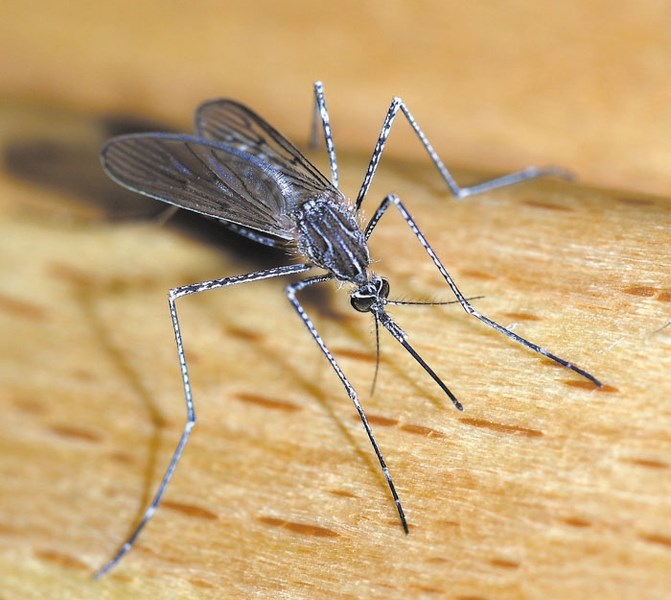Mosquitoes are not only an unwanted nuisance, but also an expensive pest to get rid of.
Rocky View County (RVC) municipal lands specialist Greg Van Soest presented to the county’s Policy and Priorities Committee meeting March 4 a review of the 2013 Langdon and Bearspaw Mosquito Program, which had a total cost of $95,000.
The program began in 2012 with a pilot in Langdon for a 1,240-acre area, and a 16,000-acre area in Bearspaw was added to the project in 2013.
RVC communications coordinator Anna Melnick said the locations selected represented a hamlet and a country residential setting.
“They were chosen to see how effective the efforts would be in each type of community,” said Melnick.
Van Soest told the committee that administration had determined during the pilot, which was conducted in the hamlet of Langdon from May until August, that the most effective means to reduce mosquito populations is to apply larvacide to standing water.
The program consisted of sampling road-side ditch bottoms and low-lying areas located on county-owned lands; sampling the locations using dip tests to identify and count the number of larvae present; and treating the standing water that showed high numbers of larval counts with larvacide.
Van Soest said sampling and treatments were done at least every week-and-a-half throughout the summer, and more after significant rainfalls.
The project areas in Langdon responded well to the program, whereas Bearspaw’s results were less-than-favourable, said Van Soest. There was $45,000 allocated to the program in Langdon, with the remaining $50,000 to Bearspaw.
“Langdon is predominantly an urban area with ample access to ditches,” said Van Soest.
He added the number of complaints from Langdon residents about mosquitoes reduced during 2012 and 2013. However, he said because the area sampled and treated in Bearspaw was “largely residential with considerable natural spaces and undulating terrain,” and also a large project area, access inhibited the results of the program.
“The majority of prime mosquito breeding habitat is located on private lands, and therefore, were not monitored and treated,” he said, adding the results of the monitoring proved to be almost consistent with initial sampling counts.
In response to Reeve Margaret Bahcheli’s question about whether mosquitoes’ flight-range was a factor in the success of the program, Van Soest said reducing the amount of standing water is the main key.
He said the county launched a public information campaign in 2012 called Fight the Bite, which offered residents tips to reduce the numbers of mosquitoes on their own land.
“The challenges in the Bearspaw area, due to the typography and the terrain, there is a lot of standing water around, so even if you’re really diligent about removing the standing water around your house and land for two acres, there could be water around that and there could be impacts coming from around that,” he said.
Bearspaw-area councillor Al Sacuta asked for a ballpark figure of the estimated cost to implement an effective mosquito reduction program in the Bearspaw area. Van Soest said due to the size, scale and scope of the program, it’s difficult to determine a best-guess figure.




